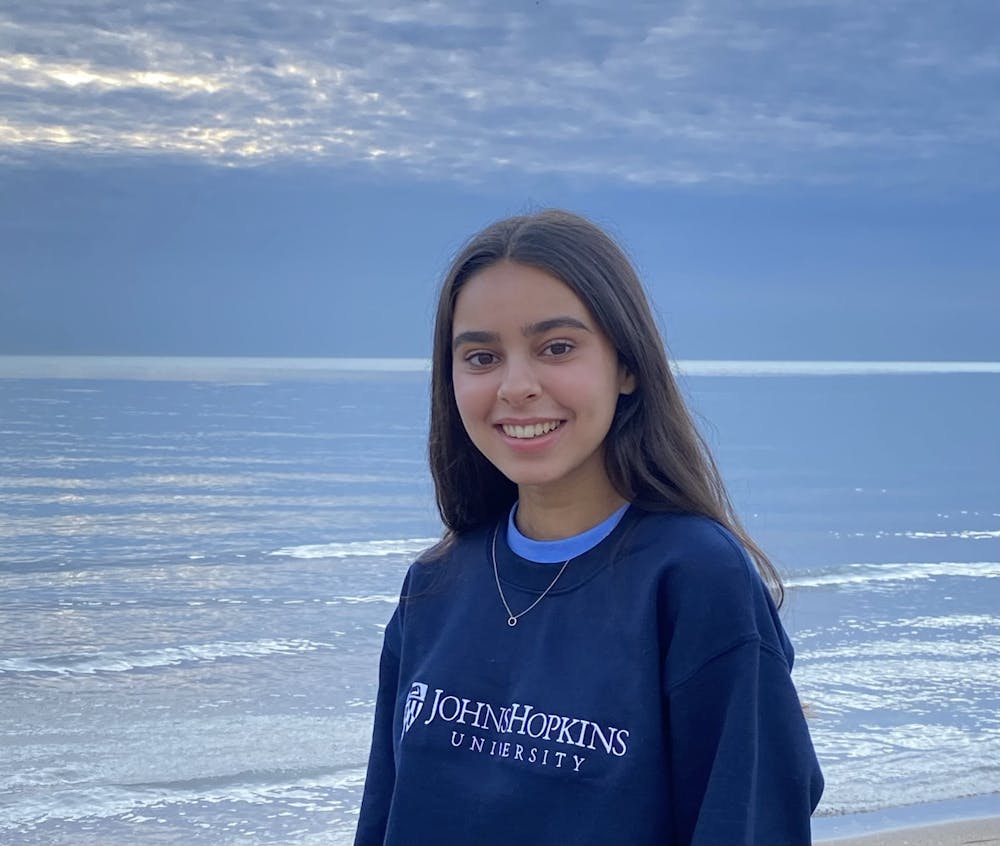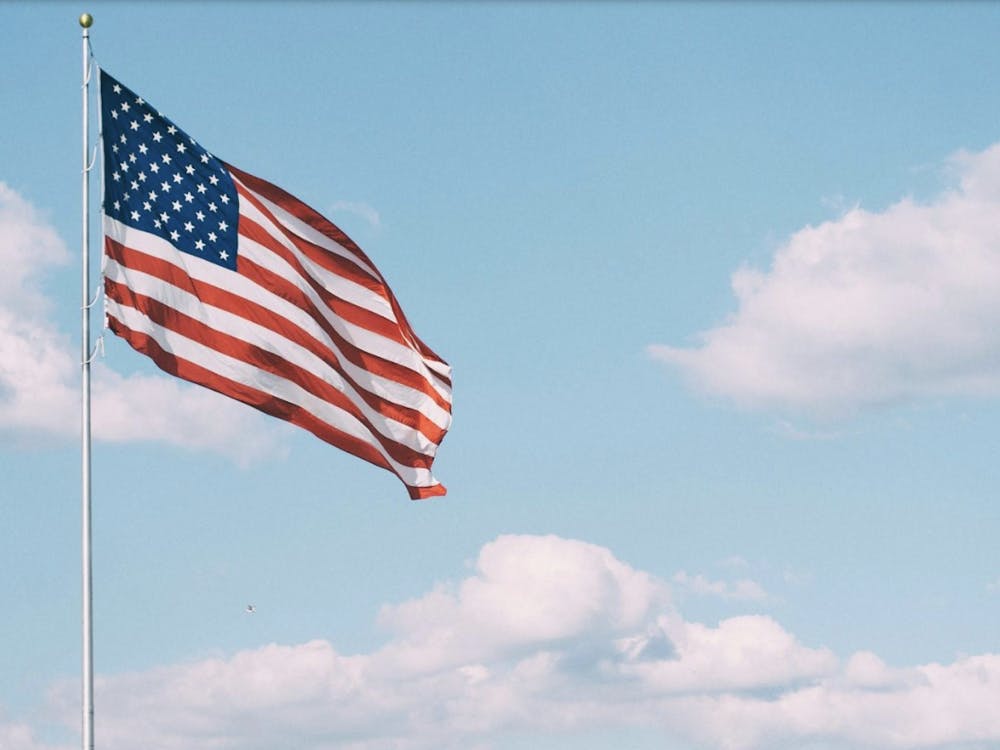Christina Fahmy is a junior studying Molecular and Cellular Biology and Spanish. In an interview with The News-Letter, she describes her journey into creating sustainable fashion, as well as where she looks to for inspiration.
The News-Letter: How would you describe yourself and your work?
Christina Fahmy: I am someone who enjoys the interaction between science and the arts. That's something I see a lot on campus with dance, art and music groups and something that I also have tried to pursue. I'm also very interested in sewing and other kinds of art that have to do with textiles.
With that, I’m interested in bringing into it the sustainability aspect of fashion, which I think is a unique take that has been kind of growing in recent years, especially with the upcoming trendiness of thrifting. It's especially important to be conscious of where your fashion comes from and the ethics behind the fashion industry. That's where I see the interaction between science and art: looking at the environmental impact of your art and your expression on the world.
N-L: What first got you into sewing and making clothes?
CF: My dad’s side of the family is from Egypt, and my grandma always came to stay with us for the summer. She was always resourceful. She was the kind of person who would mend a sock five times before throwing it out. At that time, I didn’t view that as sustainability, but I always saw that as a part of what we did.
My grandma introduced me to sewing, and she taught me and all my siblings hand sewing when we were younger. We started out making little dolls. They were always ugly looking and a little wonky, but they were fun and you can make little faces on them.
Then probably from age 11 or so, it was harder for her to come back to the U.S., so I didn't see her as much. I kind of stopped sewing, because I didn't have that presence in my life. But, when I was a sophomore in high school, I took a fashion construction class. I am very privileged and honored that we had that curriculum, because I know that's not present in a lot of schools. My final project for that class — which took a whole semester — was to make a dress. I was very meticulous with it, but I'm really glad because I still have it. When I look back, I notice things that I've learned since then.
N-L: Do you have any tips for someone who's getting into thrifting? When you go thrifting, what are you looking for first, and what kind of fabrics are you usually drawn to?
CF: I'd say I'm always drawn to natural fibers, as they tend to have better longevity. Rayon is interesting, because it's made from plant fibers, but it's made by humans, so it's an artificial fiber but it's made from a natural source. I always love to buy second-hand silk because I can't afford to buy it firsthand, and it feels very fancy.
I’d also say to look at the care instructions, because a lot of people don't realize that certain types of fabrics or garments can only be hand-washed or dry-cleaned. I would also say to definitely try things on if you can. Because even though it's cheap, it's still a waste if you buy it and you can't use it.
N-L: Tell me a bit more about the Project Runway with Students for Environmental Action at Hopkins.
CF: I'm now co-president of Students for Environmental Action (SEA) at JHU. It's a relatively small club that's focused on promoting environmental leadership and sustainability on campus. I wasn't involved with them freshman year, but I saw an advertisement that they had a sustainable fashion show that was centered around reusing garments that would have otherwise gone to a landfill.
I ended up designing between ten and twelve looks for that show, and that was really exciting, because I’ve never used my sewing in that context before. That was my first foray into fashion shows. Using the clothes that people had donated rather than sourcing my own materials specifically for a project was really fun and inspired me to move outside of my comfort zone.
N-L: Do you have a specific dress or outfit that you made that you really enjoyed making?
CF: Over the summer, I made a prairie-style dress with a really long train, a skirt with ruffles and puff sleeves — very 1970s hippie floral vibes. I used this bed sheet designed by Laura Ashley, a famous home and clothing designer. She was very well known for her historical styles and her very soft, ethereal prints. I also used a vintage pattern because I felt like I had to honor the fabric; it took so much work to finish the piece by hand using tiny stitches. I was just so satisfied with the outcome and it was really beautiful.

COURTESY OF CHRISTINA FAHMY
N-L: Where do you find your inspiration when you're making a new design?
CF: I really like to draw upon other designers. I don't think there's any shame in appreciating and getting inspired from other people's work. Laura Ashley, for example. I love her style, and I like to look through some of her prints. Someone else I'm really inspired by is Jessica McClintock of Gunne Sax, which was a famous brand from the 1960s to the 1990s. They were very dreamy and very ethereal and very much what I aspire to create.
I also love the styles of the late 90s and early 2000s bias cuts, almost like what you’d imagine a fairy would wear. I like to look at fashion show photos from that era, and see how [designers] cut the fabrics and what kind of layers they played with to create a very ethereal look.
N-L: If you were to be a type of fabric, a type of pattern or a specific style of dress, what would you be?
CF: I would be a 1970s prairie dress: sheer, lightweight, floral cotton with a long train and empire line. Those are the silhouettes that I love and feel like I will never get tired of; those are the things that will always be true to me as a designer or as an artist.





